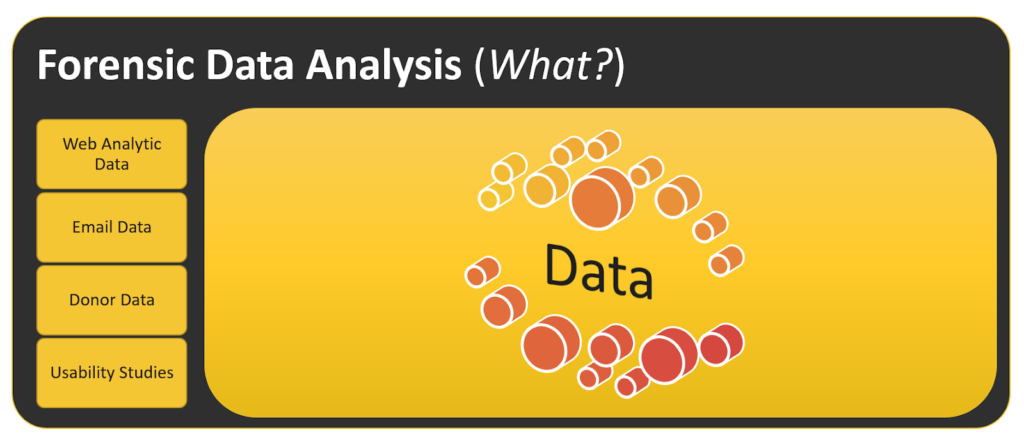Complete donor data analysis
Our process always begins with data.
Every organization has multiple independent data silos. That may include web analytic data, transaction data, CRM data, email data, social media data, and even app data. But these disparate data sources rarely connect to give you a clear picture of what’s really happening within your digital fundraising program.

That’s why the first step for every client engagement begins with our Comprehensive Optimization Roadmap Engagement (CORE).
CORE is a rigorous process that pieces together all of your independent sources of data and combines them in a meaningful way. This enables us to answer critical questions that inform a customized strategy to systematically grow your digital fundraising program.
For example, the CORE will enable us to identify:
- What sources of traffic deliver the most valuable donors?
- At what points are visitors abandoning the donor journey?
- What’s the value of acquiring an email address for your prospects, digital donors, and offline donors?
- What is the most efficient pathway to move donors towards multichannel giving?
Answering these questions (and dozens more) provides us with key insights for targeted optimization that leverages your organization’s strengths while overcoming areas of weakness.
The NextAfter team has been an incredible partnership for us. They are all about optimization and achieving results.
Mapping your donor experience
Once we complete the first phase of forensic data analysis, we will have a general sense of where the greatest opportunities exist to grow your digital revenue.
But data alone doesn’t get us all the way there.
We have to understand the people behind all of this data that are interacting with your various fundraising initiatives. The next step is to use the key insights about your donor’s behavior to prioritize our analysis of your conversion pathways.

Every organization has multiple conversion pathways, including new donors, new subscribers, social-engagement, and many others. In this mapping phase of the CORE process, we shift our attention to the visitor/user/donor experience. We will step through all of your past fundraising campaigns to identify opportunities to optimize the experience and move the visitor to the next step of the process.
Want us to help you grow your fundraising revenue?
Great! But first let’s see if our approach is the right fit for you. Our model is not right for every organization. And we will never try to sell you or convince you otherwise. Learn more about engaging with NextAfter.




